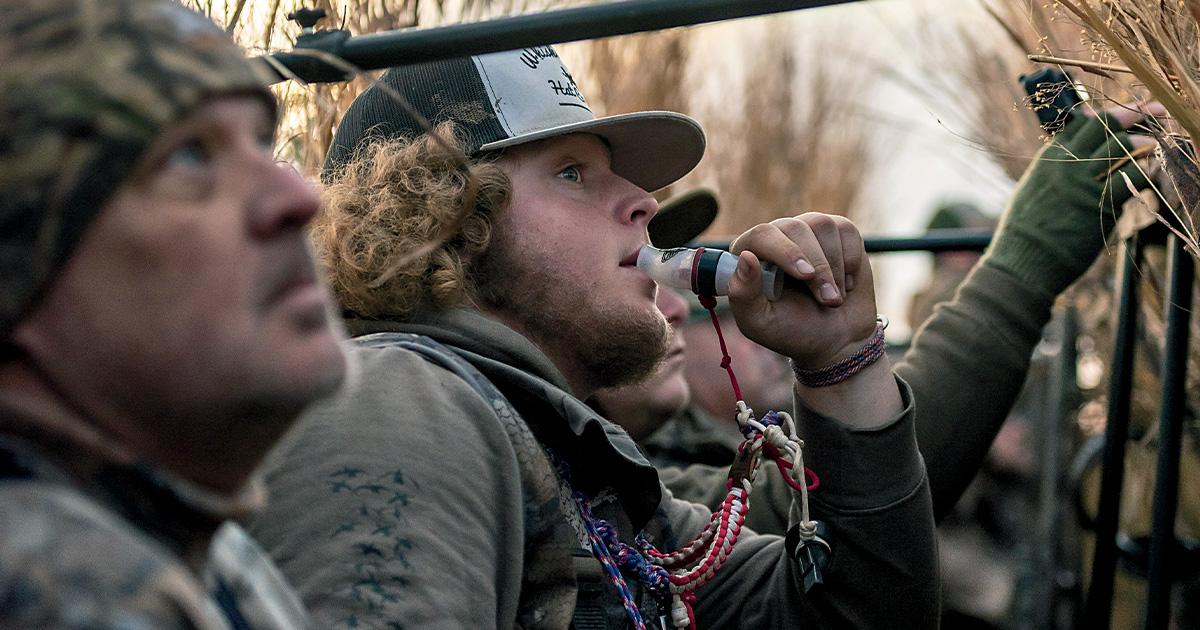Goose Calling 101
Five tips for beginning callers
Five tips for beginning callers

Beginning goose callers should master the fundamentals first before progressing to more advanced calling techniques.
The internet is full of videos that can teach you how to call Canada geese. And while these online tutorials can be helpful, the amount of information available to a beginning caller can seem overwhelming. Here are five simple tips to get you started calling geese this season
Most goose callers have switched to short-reed calls, which require the use of both hands to produce back-pressure that makes the reed “break.” Experiment with different hand positions to find the combination that works consistently, and always use “fast air” through the call, similar to what you would do to blow out candles on a birthday cake. The most important step for a beginning caller is to practice, even if only for 10 to 15 minutes a day.
The cluck sound that a Canada goose makes is the first call that a novice caller should master, as it can be easily modified and serve as the foundation of many other calls. To produce a cluck, be sure to keep the tip of your tongue anchored behind your bottom front teeth and use that fast air to quickly say the word ga-wick. Stretch out a cluck to produce the long, loud honk that is used to get the attention of passing birds, or gradually increase the speed and raise the pitch of the cluck to make an excited sound that helps convince geese to close the distance to the decoys.
A simple approach for calling geese is to mimic what the birds are doing as they approach the decoys. Match excited sounds from the birds with fast, high-pitched calling until the geese appear to be committed to the decoys, then switch to softer clucks, which should be enough to finish birds into the spread. If the geese are not making any sound, stay quiet and use a flag to get their attention. Break the silence only if the birds lose interest or show hesitation.
Having a friend provide feedback while you’re learning to blow a goose call is a great way to make progress and build confidence. There is also a benefit to having a partner or two or more in the blind while working real birds. Work together as a team in the field so that the calling coming from the blind is as realistic as possible. Designate someone to be the leader. This person will take charge on each flock, and other callers should work to complement, rather than mimic, those sounds.
The most important audience for any goose caller, beginner or experienced, are the real birds. Watch a passing flock for any reaction to the sounds you are making. If you’re not getting the reaction you want, switch things up. Change the volume, increase or slow the tempo, raise the pitch to excited honks or lower the pitch with some contented clucks. The geese will tell you what they want to hear.